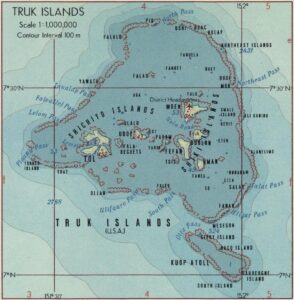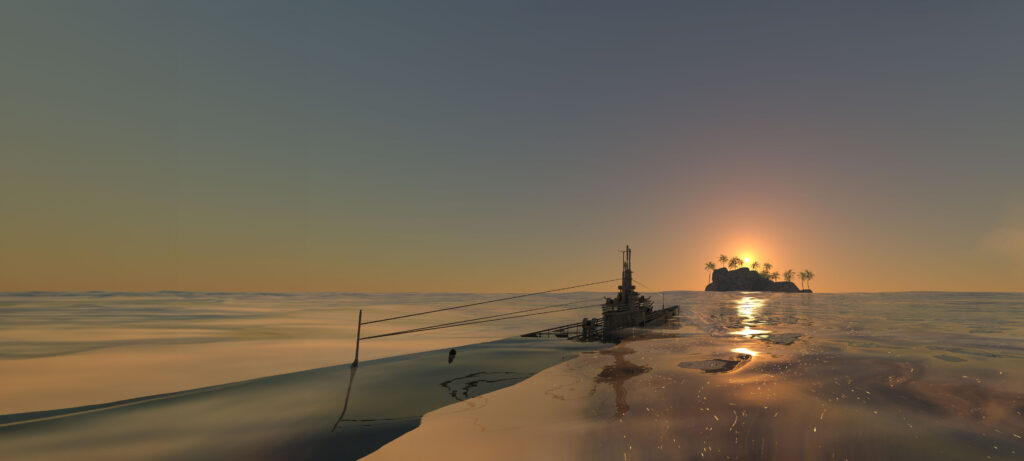
Truk Lagoon. Japan’s “Pearl Harbor of the South Pacific.” Located 3,000 nautical miles southwest of Hawaii, this vast archipelago served as a major Japanese naval base during World War II and was considered a critical asset to the Imperial Navy as it was the heart of their naval operations throughout the Pacific Theater.
Occupied by the Japanese since 1914, the Imperial Navy established itself across the lagoon’s inhabitable islands in 1939. During the height of the war, the base harbored Japan’s Imperial 4th Fleet, which included battleships, aircraft carriers, cruisers, and destroyers. Along with the warships, a garrison of support troops fortified the islands.

For this reason, Truk Lagoon was one of the initial targets in the US Navy’s strategy of ‘island-hopping’ assaults. This tactic was conceived to skip over heavily fortified Japanese-held islands and focus on more vulnerable bases as America and her allies pushed the warfront toward Japan’s home islands. Truk, however, was considered too important to simply leave untouched.
Operation Hailstone – the codename for the assault on the lagoon was set into motion 90 minutes before sunrise on February 17th, 1944, and lasted until the next day.
Three carrier task groups were committed to the operation, which consisted of five fleet carriers – Enterprise, Yorktown, Essex, Intrepid, and Bunker Hill – along with four light carriers – Belleau Wood, Cabot, Monterey, and Cowpens – giving the offensive an aerial strike force of more than 500 warplanes.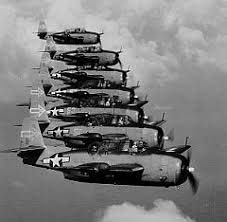
With Japanese radar on Truk unable to detect low-flying aircraft and the fact there were no active air patrol that morning, the Allies’ attack was a complete surprised to the enemy.
By this time in the war, Japan’s infamous Mitsubishi A6M Zero was an outdated aircraft compared to America’s aerial firepower. U.S. Navy fighter pilots in their Grumman F6F Hellcats, with the advantages of speed, altitude, and armor, managed a surprisingly one-sided victory against the Japanese. As many as 30 of the 80 Zeros responding to the incoming warplanes were shot down, compared to only four Hellcats being lost.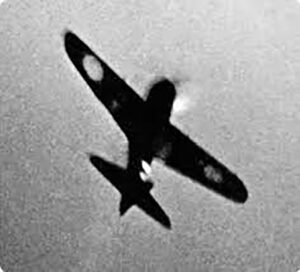
During the next two days, American torpedo and dive bombers inflicted heavy damage on Japanese ground facilities. Early on, Grumman TBF Avenger torpedo bomber squadrons from Enterprise and Intrepid carriers dropped fragmentation and incendiary bombs on runways at Eten Island and the seaplane base on Moen Island. Dozens of aircraft were damaged or destroyed, further blunting any possible counterattack.
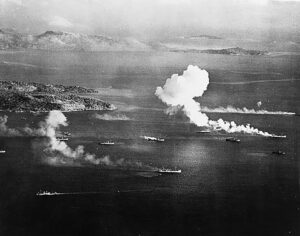 Without air cover, many Japanese ships were caught helpless at anchor. Of those vessels trying to escape the onslaught by setting out to sea were attacked and sunk by U.S. submarines position outside the lagoon’s shipping channels. US battleships – Iowa and New Jersey, along with an array of cruisers – were key during the attack as they circumnavigated the lagoon, constantly bombarding shore positions and engaging enemy ships.
Without air cover, many Japanese ships were caught helpless at anchor. Of those vessels trying to escape the onslaught by setting out to sea were attacked and sunk by U.S. submarines position outside the lagoon’s shipping channels. US battleships – Iowa and New Jersey, along with an array of cruisers – were key during the attack as they circumnavigated the lagoon, constantly bombarding shore positions and engaging enemy ships.
Operation Hailstone was a pivotal moment in shifting the balance of power in the Pacific theater. Its success inflicted heavy damage on the Japanese fleet, sending nearly 50 vessels to the bottom of the lagoon and destroying over 200 of Japan’s fighter aircraft.
The operation revealed America’s ability to strike deep into enemy territory and deliver decisive blows to her enemy. Additionally, it crippled Japan’s ability to project force across the region and highlighted the fact that the Imperial Navy could no longer defend the oceanic passage that led directly to Japan’s homeland. It was a morale boost for Allied forces who would ultimately prevail in the Pacific theater.
Further Reading

